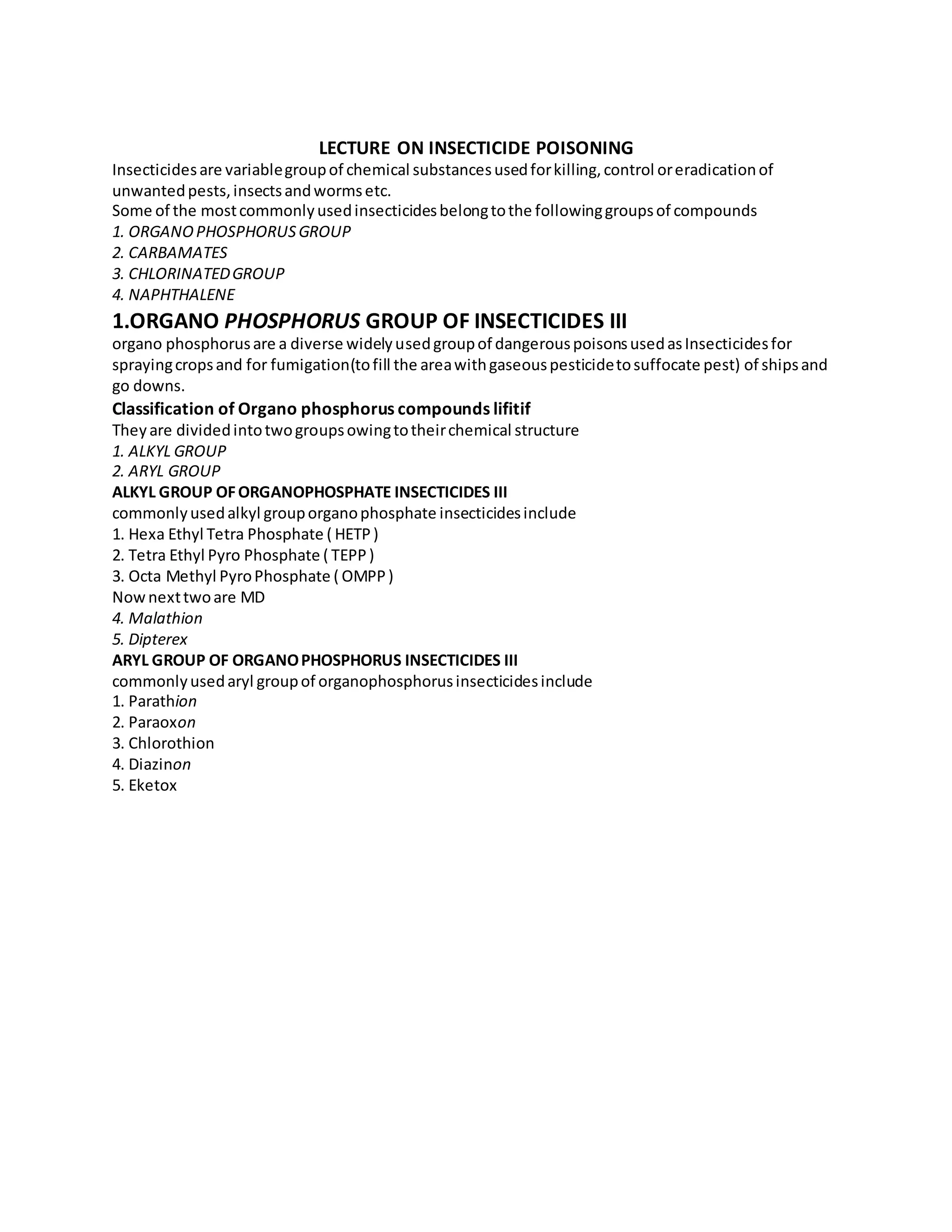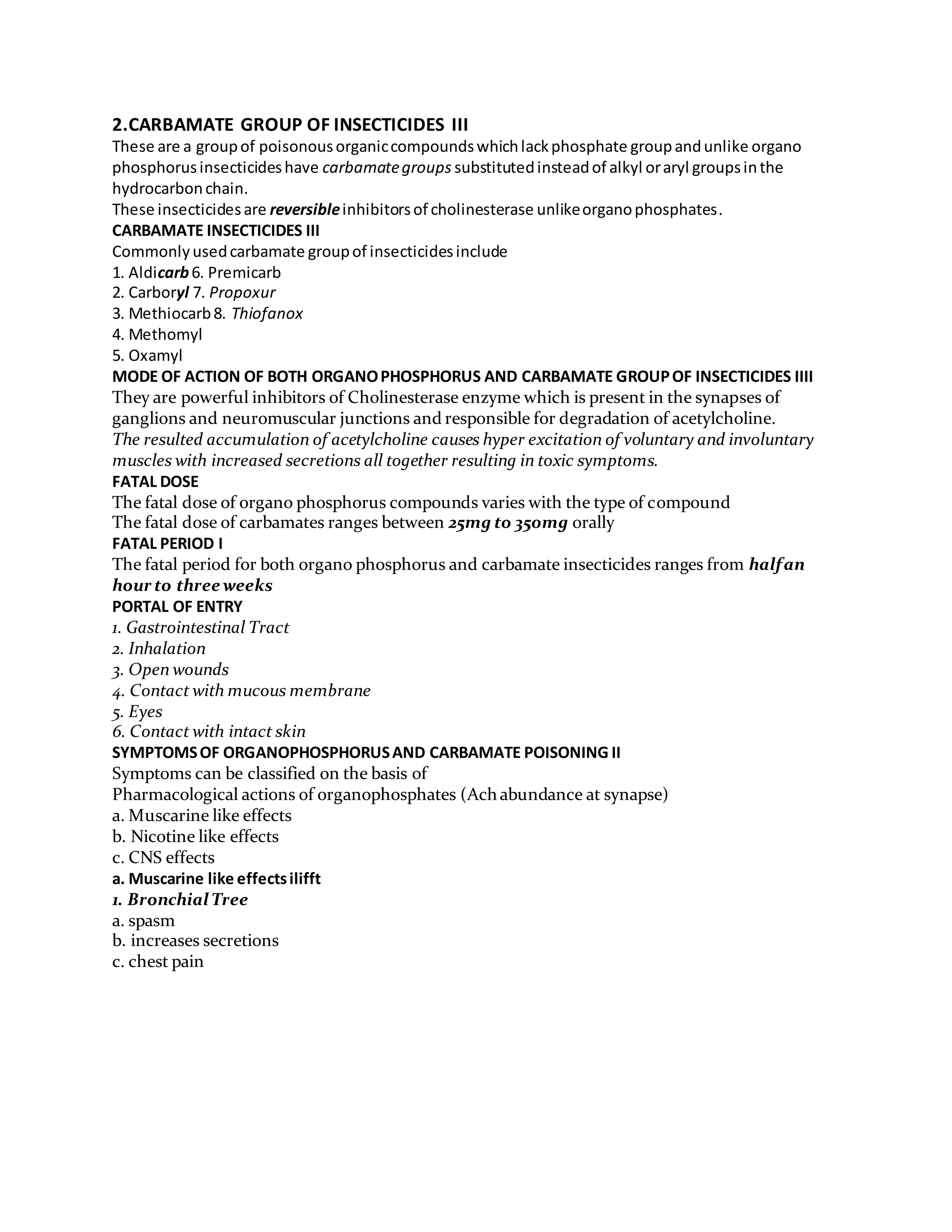The document provides information on insecticides and their classification. It discusses in detail the organophosphorus and carbamate groups of insecticides, including their mechanism of action, symptoms of poisoning, treatment, and autopsy findings. It also briefly covers the chlorinated and naphthalene groups. Aluminum phosphide is described as a rodenticide that releases phosphine gas, causing multi-organ damage by inhibiting protein synthesis. Symptoms include vomiting, breathlessness and hypotension. Autopsy findings include congestion of organs. Treatment aims to reduce absorption and toxicity through gastric lavage and magnesium supplementation.









